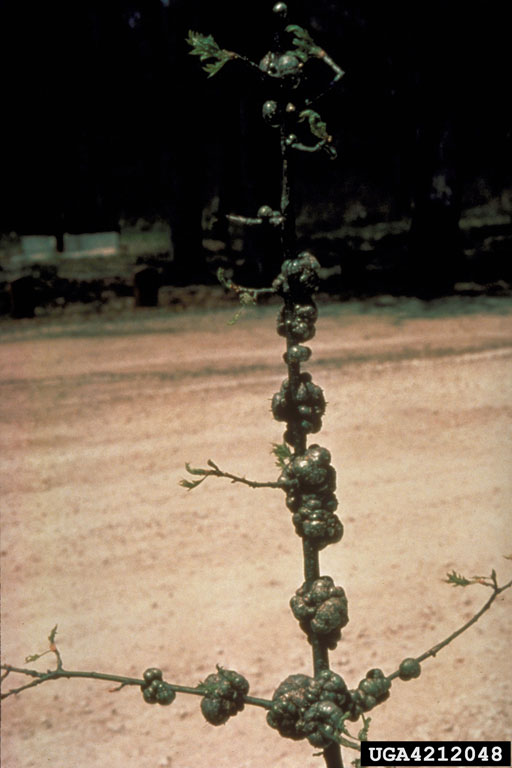Callirhytis
Description 1/8-1/4" (3-5 mm). Brown to reddish brown. Abdomen compressed on sides. Short "waist." Antennae threadlike. Legs stout. Wings transparent.
Food Adult may drink nectar. Larva feeds on soft tissues inside galls on live oak twigs and leaves.
Life Cycle These gall wasps have 2 different generations a year. The 1st consists of females that reproduce parthenogenetically, or asexually. The 2nd generation consists of males and females that reproduce sexually. The asexual generation produces stem galls on 1 oak species and the sexual generation produces leaf galls on another oak species. Galls grow to the size of small apples. Fully grown larvae pupate in central chambers inside the galls.






